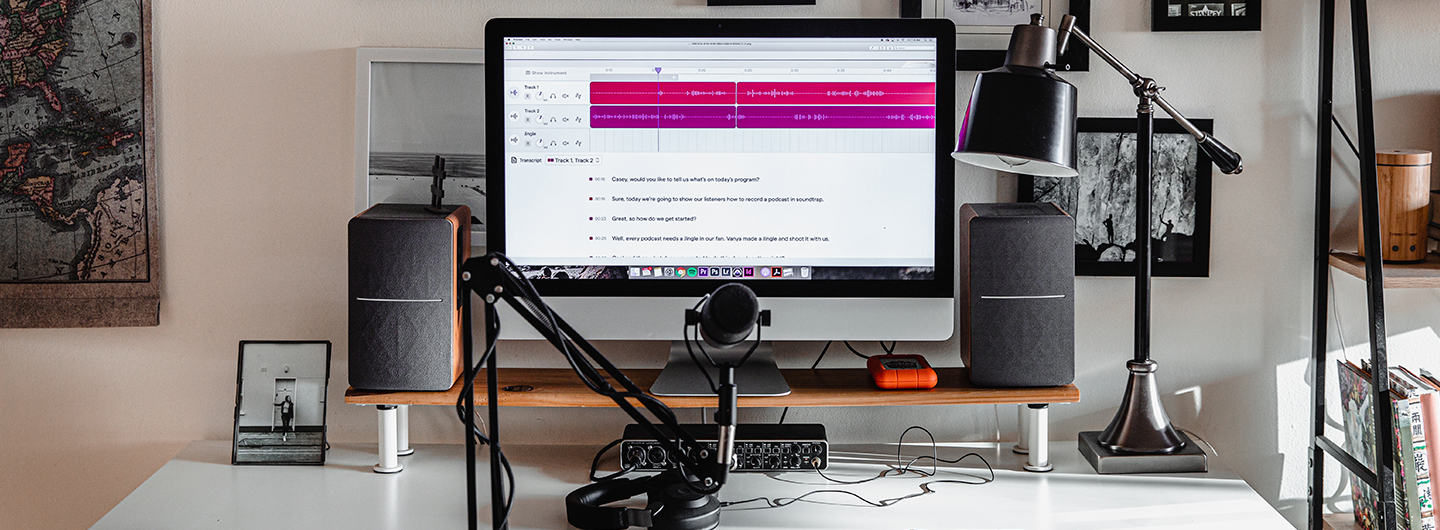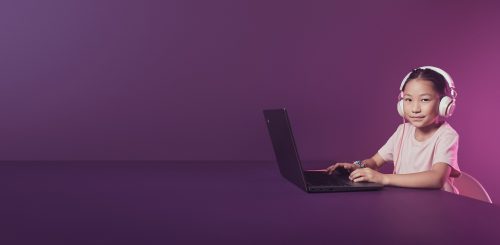
How Soundtrap Helps Increase Music Access for Students
February 24, 2023Students need more than math, reading, and writing knowledge to reach their full potential. For a well-rounded educational experience, students require an environment that encourages them to think outside the box while developing their artistic literacy. Music access plays an integral role in increasing artistic literacy in these settings.
However, policy changes and limited resources in public schools mean that many students aren’t given the opportunity to explore their musical talents. The great news is that, with edtech tools like Soundtrap for Education, there’s no need to shell out big bucks for traditional music equipment. All your students will need is internet access and a mobile device to experience the joy of music in the classroom!
If you’re hesitant to bring technology into the classroom, consider the benefits of integrating modern tools into traditional teaching methods. These tools can make education exciting for a generation of digital native students and increase music access for students!
The Benefits of Better Music Access with EdTech Software
Most educators know the benefits of learning a musical instrument, but only some schools have access to this equipment. Fortunately, edtech tools like Soundtrap for Education allow every student to experience the joy of music education. Get ready to reap the following benefits of better music access in your classroom!
Edtech Tools Support Musical Creativity and Accessibility
When most people envision a music class, they envision students repeating scales on classical instruments and learning about music theory. But today’s music classes look quite different. Intuitive edtech tools, like Soundtrap for Education, allow every student to let their creativity run wild!
Students can use the technology they know and love to experiment with music composition, even if they don’t know how to play a traditional instrument. With your guidance, students can work in groups on songs, podcasts, and more while demonstrating new ways of thinking about complex problems.
Every Teacher Can Benefit from Edtech Tools
Even experienced music teachers can have a blast with Soundtrap for Education! You can connect with your students on a deeper level, set trackable goals, and use the data to identify where your students excel. If you teach a subject that’s unrelated to music, you can still incorporate music into your lesson plans to spark student engagement.
Today’s edtech software makes music access easy. With this revolutionary technology, you can track your student’s project progress and offer a helping hand when necessary.
Any Class Can Use Soundtrap
Even amateur musicians can create a musical masterpiece with the right technology! There’s no need to explain complex musical concepts or practice scales, so even elementary-aged students can express themselves through music.
Edtech tools like Soundtrap increase music access for differently-abled students and students who don’t speak English as their first language. The tools empower students to create music without holding instruments or reading music compositions.
Your class can experience the benefits of improved music access, even if you’re not a music teacher. As a result, edtech software can enhance the STEAM education curriculum by enabling students to think outside the box about different subjects through the lens of music.
How to Increase Music Access with Soundtrap
Improved access to music education means that you can bring students together regardless of their abilities, ethnicity, economic status, or academic background. Everyone can connect, collaborate, and connect with Soundtrap for Education. Reap the benefits of better music access with these exciting lesson plans!
1. Learn About Indigenous Cultures with Land Acknowledgement
Increasing music access means your students can learn about different cultures and become more open-minded. In our “Land Acknowledgement” lesson plan, you can pull from Indigenous Ways of Knowing to explore the language of Indigenous peoples and the First Nations.
In this lesson plan, students will begin with a discussion about their relationship with the land and how people can live in harmony with the land. As students learn about land acknowledgment and critiques of land acknowledgment, they’ll research existing or broken treaties.
Then, they’ll write and record a script on land acknowledgment and build a soundscape with the audio track. At the end of the lesson, have students write down actionable steps about how they can learn more about Indigenous communities in their area.
2. “Say My Name” with the Entire Class
Students of all ages and skill levels can participate in our “Say My Name” lesson plan. One of the best ways to spark engagement is by creating a welcoming, inclusive educational environment. You can get started by encouraging your students to learn one another’s names, which builds a sense of community and allows the entire class to share a little about their cultures.
You can ask the class to answer questions such as, “Does your name hold a special meaning in your culture?” or “If you chose this name for yourself, why?” Once each student shares their name, they will record their name and the spelling of their name. Next, they’ll invite the student below them. Once every student has recorded their name, you’ll have a polished musical masterpiece for the entire class to share!
3. Explore the Connection Between Music and Well-Being
Music is a powerful tool that lets students connect with their innermost thoughts and feelings. Moreover, studies show that music education positively affects students’ ability to regulate their emotions. You can bring this to your classroom with our Music and Well-Being lesson plan!
In this lesson plan, students will write down their feelings on paper and then listen to a few songs from this playlist. As your class listens, they’ll close their eyes and get a feel for the music. When the music stops, your class will write down how they feel after listening to the playlist.
This exercise will help students recognize the power of music and encourage them to use music as a healthy outlet for their emotions. The best part is students of all ages and skill levels can experience the benefits of our Music and Well-Being lesson plan!
4. Have a Night at the Museum in Your Classroom
When students have better music access in the classroom, it opens their hearts and minds to new ways of interpreting outstanding works of art. Our Night at the Museum lesson plan will help your students learn how to interpret different art types and create their masterpieces using Soundtrap.
Kick off this lesson plan by allowing students to express themselves. Show the class a few art pieces from the Google Arts and Culture page, then ask them how the artwork makes them feel. Are there any sounds they associate with each painting? What would it sound like if they could create their own soundscapes for each piece of art?
Although students can work on this project individually, collaborating in Soundtrap is easier than ever with cloud-based technology! Once your students are in their respective groups, they’ll select a work of art and create a mini soundscape to share with their group. Then, they’ll discuss their artistic interpretations and what they learned about their classmates from listening to the soundscapes.
5. Cultivate Empathy and Spread the Joy
Increased music access in educational institutions goes hand in hand with increased empathy and the ability to relate to others. Additionally, introducing students to music at a young age improves their organizational skills, language acquisition, and reduces anxiety.
Multiple studies illustrate that children exposed to music in group settings have higher levels of empathy, but you don’t need to be a music teacher to bring this to your classroom!
With our “Empathy Interview” lesson plan, students will explore Soundtrap with another classmate that will act as their “empathy partner.” Once you’ve divided your class into groups of two, each student will ask the other questions about what brings them joy. Then, each student will create a song or spoken word recording about something that brings their partner joy. Through this fun activity, your students can connect with their peers on a deeper level and spread their happiness through music!
Increase Music Access in Schools with Soundtrap for Education
Soundtrap for Education is the ultimate audio production platform for students and teachers to create and edit audio recordings. Pupils and educators can easily tap into their artistic side with this intuitive audio platform that facilitates a creative learning environment for every subject, regardless of the student’s age or experience level.
With Soundtrap for Education, students and teachers can collaborate with advanced cloud technology at any time or place. In addition, the platform comes equipped with a robust resource portal, with tutorials, an external curriculum, and lesson plans to complete the educational experience. And to ensure privacy, teachers can ensure that student collaboration is safe and secure with invite-only groups in Soundtrap’s versatile digital environment.
If you’re ready to enhance your educational experience with an intuitive cloud-based audio production platform, get started today with Soundtrap for Education! And be sure to share this article with other teachers in your network to help spread the joy of learning through sound.
 EDU Portal
EDU Portal


